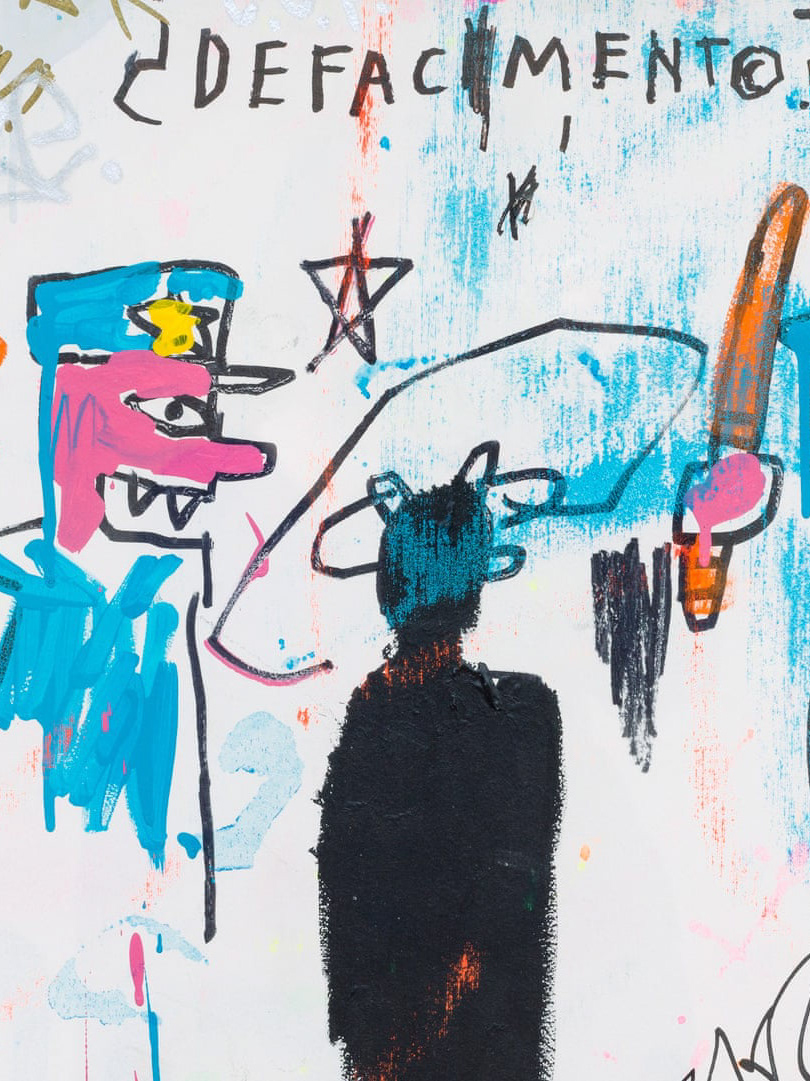“The Valley’s not excluded [from the conversation] just because a majority of our residents are Latino or Hispanic. It does not mean that injustices are not happening or have not taken place here.”
- JONELY ALCE,
Afro-Latinx activist from Weslaco, Texas
Afro-Latinx activist from Weslaco, Texas
Photo by Ayodeji Ogunlana.
RGV BLACK HISTORY
"...Many black men who moved into the Lower Rio Grande Valley after the Civil War married into ethnic Mexican families soon after their arrival. They joined black women and men who from the 1850s onward found sanctuary on the U.S./Mexican border. Although the black population in the Rio Grande Valley of South Texas can be traced back to the mid 1740s with the settlement of the Afro-Spaniard José de Escandon, most black migration to the Rio Grande Valley happened in three periods: 1. the Underground Railroad era with enslaved people fleeing from the slaveholding southern United States into Mexico between 1836 and 1865, 2. free black settlers on the border between 1850 and 1900, and 3. twentieth century black migrants who arrived between 1900 and 1960...
"Although the four major interracial families–the Webbers, Jacksons, Singletarys, and Rutledges– increasingly identified as ethnic Mexicans, they nonetheless continued to support the black newcomers who arrived in the area. One of their most important contributions was Jackson Chapel, a Methodist Church found in 1874 on Jackson Ranch between the communities of Donna and Hidalgo, Texas. The one room church served both as a school and community meeting center and still serves that purpose today. The church became the center of the small but growing black community while the school, for many years, provided the only educational opportunity available to African American children. As vital as it was to black South Texas, however, Jackson Chapel also provided a space for Anglos, blacks, and ethnic Mexicans to meet, exchange culture, and interact in their daily lives...
"...With the post-World War II influx of Mexican immigrants and Tejanos from other areas of Texas as well as the steadily increasing black population, the size, number, and influence of the early black-ethnic Mexican families declined. While the border region of the Lower Rio Grande Valley continues to be a space of interracial-interethnic marriage freedom, it is important to recall how the process began that allowed this far south region of Texas to quietly challenge the rest of the United States on the question of interracial marriage. The South Texas past may well suggest one type of future as the black and brown populations continue to grow in numbers and influence throughout the nation."
BORDER LOVE ON THE RIO GRANDE: AFRICAN AMERICAN MEN AND LATINAS IN THE RIO GRANDE VALLEY OF SOUTH TEXAS (1850-1940)
Read the full article here.
"The first Africans to land on the shores of South Texas were most likely from a shipwrecked slave ship. Early Spanish explorers and settlers in Nuevo Santander (1747-) reported on a tribe they called Negros or a black tribe near the mouth of the Rio Grande. Their presence is recorded in both Matamoros and Reynosa histories primarily in relation to the Spanish missions. The Negros were reported as being peaceful, sometimes camping near Spanish ranches and visiting the missions, but with a single incident of having stolen cattle from Spanish settlements farther up the Rio Grande. They were said to have been proficient with both bow and arrow, and, unusual for the area, they were also very dexterous with spears. In 1798 a report stated that there were Negros east of old Reynosa with 95 men, 35 women (probably Indian wives), 8 boys, and 6 girls. A later report from the Matamoros parish reported 7 men, 1 boy, 8 girls, and 6 unclassified females. By 1810 there were no more reports of Negros. It is most likely that originally only males had been shipwrecked, and as they intermarried, they absorbed into the larger community."
UTRGV University Library Local Collection Historical Events:
First African Americans in South Texas
First African Americans in South Texas
RECENT PRESS
Pastor Smith and his wife First Lady, Sharon Smith, describes Faith Fellowship Church [located on the corners of 21st Street and Fresno Avenue in McAllen] as a true place of worship and a cornerstone for African Americans.
“We can celebrate together, we can worship together and we can become friends in this area to let others know we are here, but we can be here together…our church has been based on bringing the African American community together to be as one,” he said...
“We have a lot of history here. You know majority of the African Americans who came to this area…they either worked on the railroad or they worked on the farmland…, “First Lady Smith explained.
To commemorate that history, the church celebrated Black History Month Sunday paying homage to African American pioneers and trailblazers who shaped the Valley and the U.S.
“Martin Luther King, he lost his life for freedom and now that has transpired, we can be what he designed for it to be. I think we’ve come a long way, but we still have a long way to go,” Pastor Smith said.
ValleyCentral:
Local African American church celebrates Black History Month
Local African American church celebrates Black History Month
"As a Black man raised in the Rio Grande Valley, Joshua Gatling’s skin color set him apart from many of his peers and friends. The Black community makes up a tiny fraction of the Valley’s population, but despite that, and despite the Valley being a minority-majority region, they still face racism and prejudice...
“People want to say that there isn’t any racism down here, but there is,” Gatling, now 27, said. “A lot of the racism here is the racism of being ignorant to the different types of other people, it’s when they only hang out with only one group.”...
He acknowledged that the sort of racism he faced and continues to face wasn’t as blatant, as regimented, as the sort of racism faced by his grandparents’ generation."
The Monitor:
Minority Experience in
South Texas Comes into Focus
Minority Experience in
South Texas Comes into Focus
''Several hundred people braved the 94 Texas degree heat on Saturday [June 6, 2020] — the majority in face masks — to protest racism and police brutality...
Arianna Quiroz tells the crowd at the protest about some of the things she heard growing up in a Latino household. “I heard, ‘Stay out of the sun or you will get too dark.’ If you have kids with a light skin, ‘Man your babies will be so cute’,” she said. “These microaggressions, even meant with no malice, are intertwined with racism.”
Quiroz said she was disappointed to see people within her community use that type of language. “It hurts my soul so much to see our Latin community use racial slurs to talk down to our black brothers and sisters,” she said. “How disgraceful it is to be a minority in this country and to think that you are better than another.”...
Jamel Stokely is originally from Illinois, but recently moved to the Valley. “Valley, I’m speaking to you, we are all going to come together. One way or another because it’s not just about George Floyd, it’s not just about Breonna Taylor, it’s not just about black, or white, or brown. This is history,” Stokely said. “Laws are going to be changed, demands are going to be met. So right now, stand up for the cause.”
Texas Public Radio:
RGV Protests In Solidarity With Black Lives Matter, Addresses Anti-Blackness In Latinx Community
RGV Protests In Solidarity With Black Lives Matter, Addresses Anti-Blackness In Latinx Community
IN CONVERSATION
Page 151, excerpt from RGV-born and internationally acclaimed cultural theorist Gloria Anzaldúa's book The Gloria Anzaldúa Reader (Duke University Press, Oct 22, 2009).
MORE PRESS: First African American Culture Museum to Open in San Benito
See something missing or outdated? Let us know.
Thank you!





